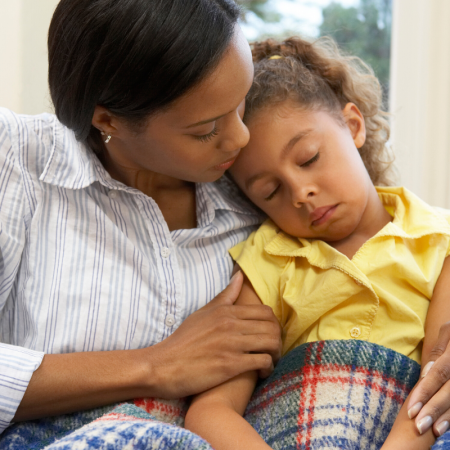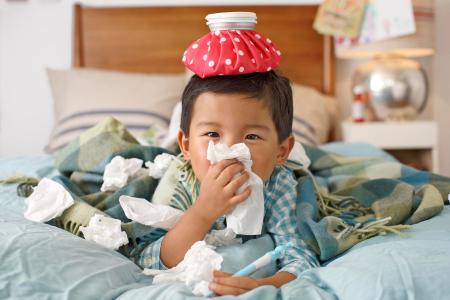How can we help our child develop a healthy sense of self-esteem?
By definition, self-esteem is the way in which an individual perceives herself-in other words, her own thoughts and feelings about herself and her ability to achieve in ways that are important to her. This self-esteem is shaped not only by a child’s own perceptions and expectations, but also by the perceptions and expectations of significant people in her life-how she is thought of and treated by parents, teachers and friends. The closer her perceived self (how she sees herself) comes to her ideal self (how she would like to be), the higher her self-esteem.
For healthy self-esteem, children need to develop or acquire some or all of the following characteristics:
A sense of security.
Your child must feel secure about herself and her future. (“What will become of me?”)
A sense of belonging.
Your youngster needs to feel accepted and loved by others, beginning with the family and then extending to groups such as friends, schoolmates, sports teams, a church or temple and even a neighborhood or community. Without this acceptance or group identity, she may feel rejected, lonely, and adrift without a “home,” “family” or “group.”
A sense of purpose.
Your child should have goals that give her purpose and direction and an avenue for channeling her energy toward achievement and self-expression. If she lacks a sense of purpose, she may feel bored, aimless, even resentful at being pushed in certain directions by you or others.
A sense of personal competence and pride.
Your child should feel confident in her ability to meet the challenges in her life. This sense of personal power evolves from having successful life experiences in solving problems independently, being creative and getting results for her efforts. Setting appropriate expectations, not too low and not too high, is critical to developing competence and confidence. If you are overprotecting her, and if she is too dependent on you, or if expectations are so high she never succeeds, she may feel powerless and incapable of controlling the circumstances in her life.
A sense of trust.
Your child needs to feel trust in you and in herself. Toward this goal, you should keep promises, be supportive and give your child opportunities to be trustworthy. This means believing your child, and treating her as an honest person.
A sense of responsibility.
Give your child a chance to show what she is capable of doing. Allow her to take on tasks without being checked on all the time. This shows trust on your part, a sort of “letting go” with a sense of faith.
A sense of contribution.
Your child will develop a sense of importance and commitment if you give her opportunities to participate and contribute in a meaningful way to an activity. Let her know that she really counts.
A sense of making real choices and decisions.
Your child will feel empowered and in control of events when she is able to make or influence decisions that she considers important. These choices and decisions need to be appropriate for her age and abilities, and for the family’s values.
A sense of self-discipline and self-control.
As your child is striving to achieve and gain more independence, she needs and wants to feel that she can make it on her own. Once you give her expectations, guidelines, and opportunities in which to test herself, she can reflect, reason, problem-solve and consider the consequences of the actions she may choose. This kind of self-awareness is critical for her future growth.
A sense of encouragement, support and reward.
Not only does your child need to achieve, but she also needs positive feedback and recognition – a real message that she is doing well, pleasing others and “making it.” Encourage and praise her, not only for achieving a set goal but also for her efforts, and for even small increments of change and improvement. (“I like the way you waited for your turn,” “Good try; you’re working harder,” “Good girl!”) Give her feedback as soon as possible to reinforce her self-esteem and to help her connect your comments to the activity involved.
A sense of accepting mistakes and failure.
Your child needs to feel comfortable, not defeated, when she makes mistakes or fails. Explain that these hurdles or setbacks are a normal part of living and learning, and that she can learn or benefit from them. Let your supportive, constructive feedback and your recognition of her effort overpower any sense of failure, guilt, or shame she might be feeling, giving her renewed motivation and hope. Again, make your feedback specific (“If you throw the ball like this, it might help”) and not negative and personal (“You are so clumsy,” “You’ll never make it”).
A sense of family self-esteem.
Your child’s self-esteem initially develops within the family and thus is influenced greatly by the feelings and perceptions that a family has of itself. Some of the preceding comments apply to the family in building its self-esteem. Also, bear in mind that family pride is essential to self-esteem and can be nourished and maintained in many ways, including participation or involvement in community activities, tracing a family’s heritage and ancestors, or caring for extended family members. Families fare better when members focus on each other’s strengths, avoid excessive criticism and stick up for one another outside the family setting. Family members believe in and trust each other, respect their individual differences and show their affection for each other. They make time for being together, whether to share holidays, special events or just to have fun.
- Last Updated
- 11/2/2009
- Source
- Caring for Your School-Age Child: Ages 5 to 12 (Copyright © 2004 American Academy of Pediatrics)






